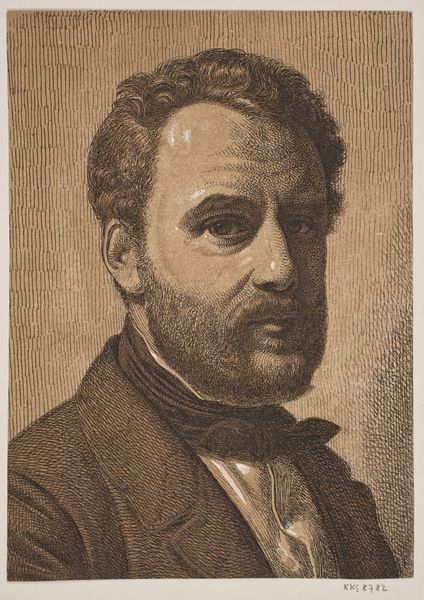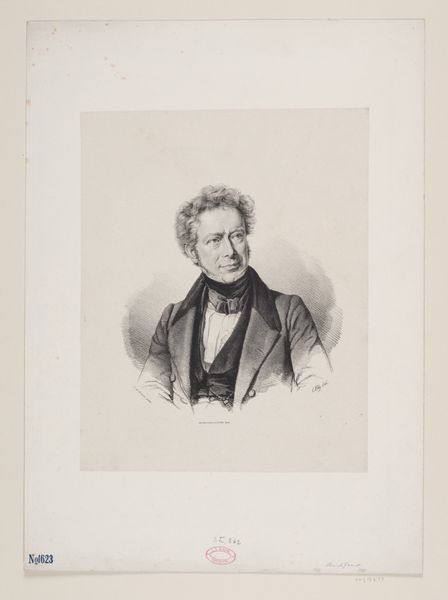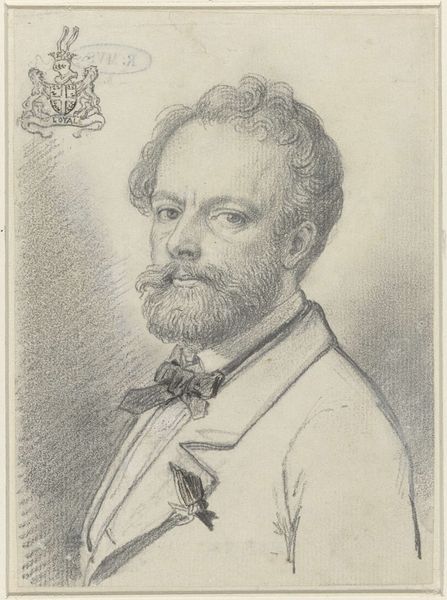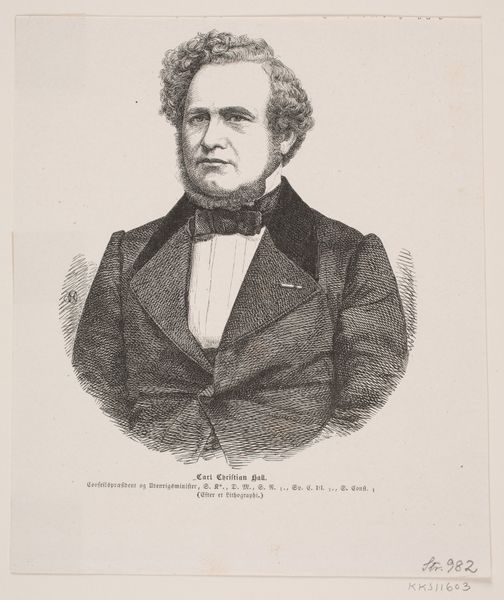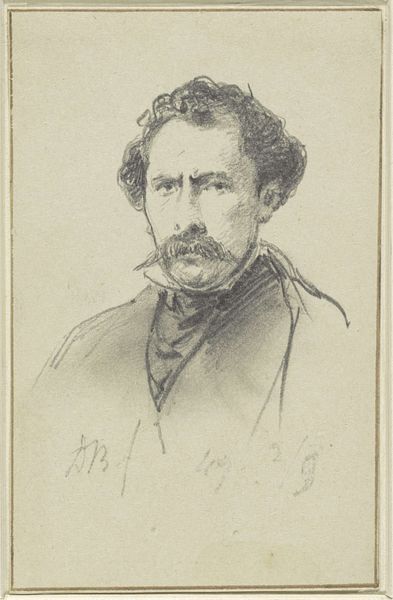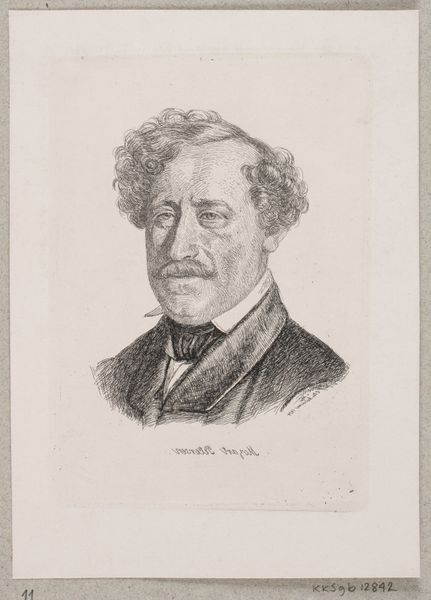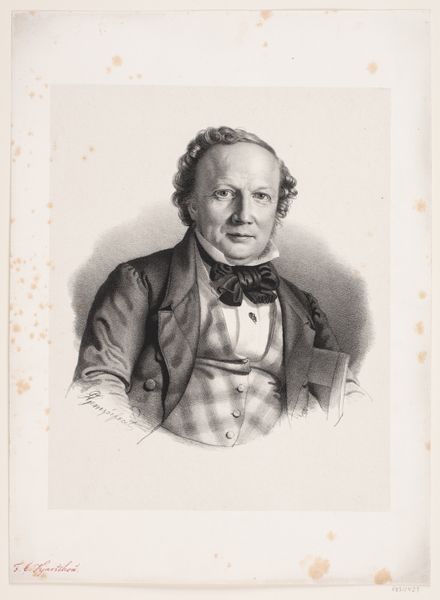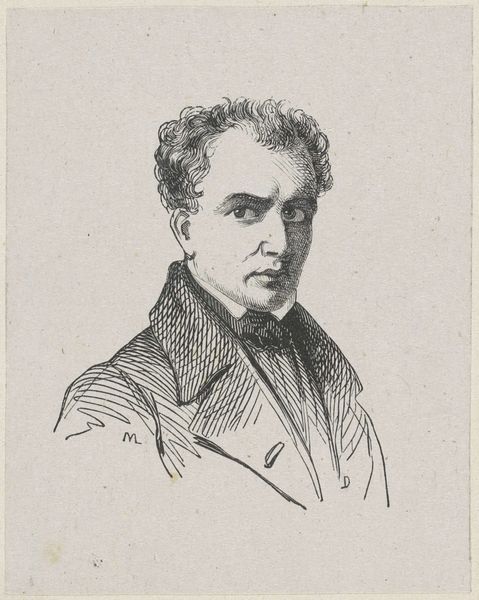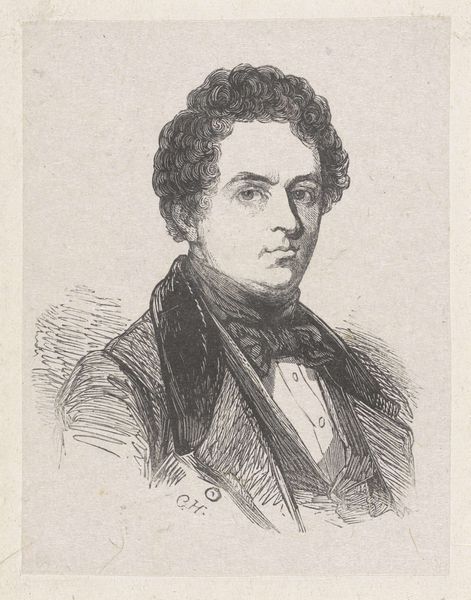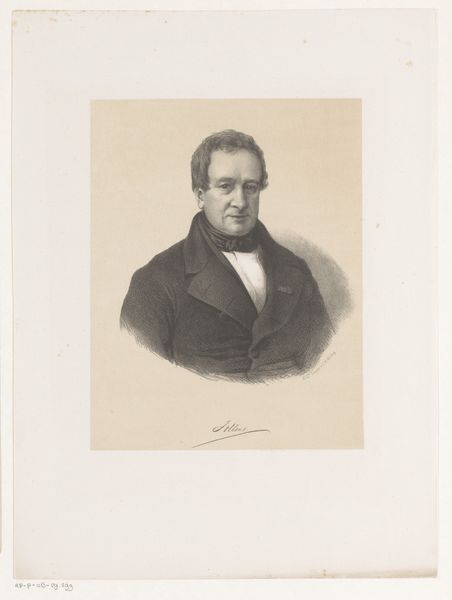
print, engraving
#
portrait
# print
#
portrait drawing
#
academic-art
#
engraving
Dimensions: 212 mm (height) x 155 mm (width) (bladmaal)
Editor: Here we have Constantin Hansen's "Portræt af Wilhelm Marstrand" from 1852, rendered as an engraving. The density of line work is captivating. What strikes me is how the varying textures create a palpable sense of depth. What do you see in this piece? Curator: Intriguing observation! Consider first the method: engraving privileges line, its density and direction crafting tonal variation. Note how the background employs simple, regimented strokes while the figure presents an elaborate, almost chaotic system of cross-hatching, lending it significant volume. The semiotic distinction creates an interesting contrast, doesn’t it? Editor: It certainly does! The background almost fades away, making Marstrand the clear focal point. So, you're saying the artist prioritizes technique over subject here? Curator: Not necessarily prioritization but considered synergy. Hansen employs technique to accentuate form and structure. Consider, for instance, the rendering of light across Marstrand's face. Note the artist's deliberate manipulation of light and shadow using only linear variations; the chiaroscuro effect enhances not only verisimilitude but also character. Does this systematic approach offer any insights? Editor: Yes! The focus is on translating three-dimensionality onto a flat surface through meticulous technique. I initially saw only a portrait but now understand the underlying method defining its visual impact. Curator: Precisely. By considering purely formal qualities like line, tone, and texture, we understand the strategies at play that comprise meaning in this print. Editor: Thank you! Now I have a better appreciation for Hansen's technique in shaping our perception.
Comments
No comments
Be the first to comment and join the conversation on the ultimate creative platform.
